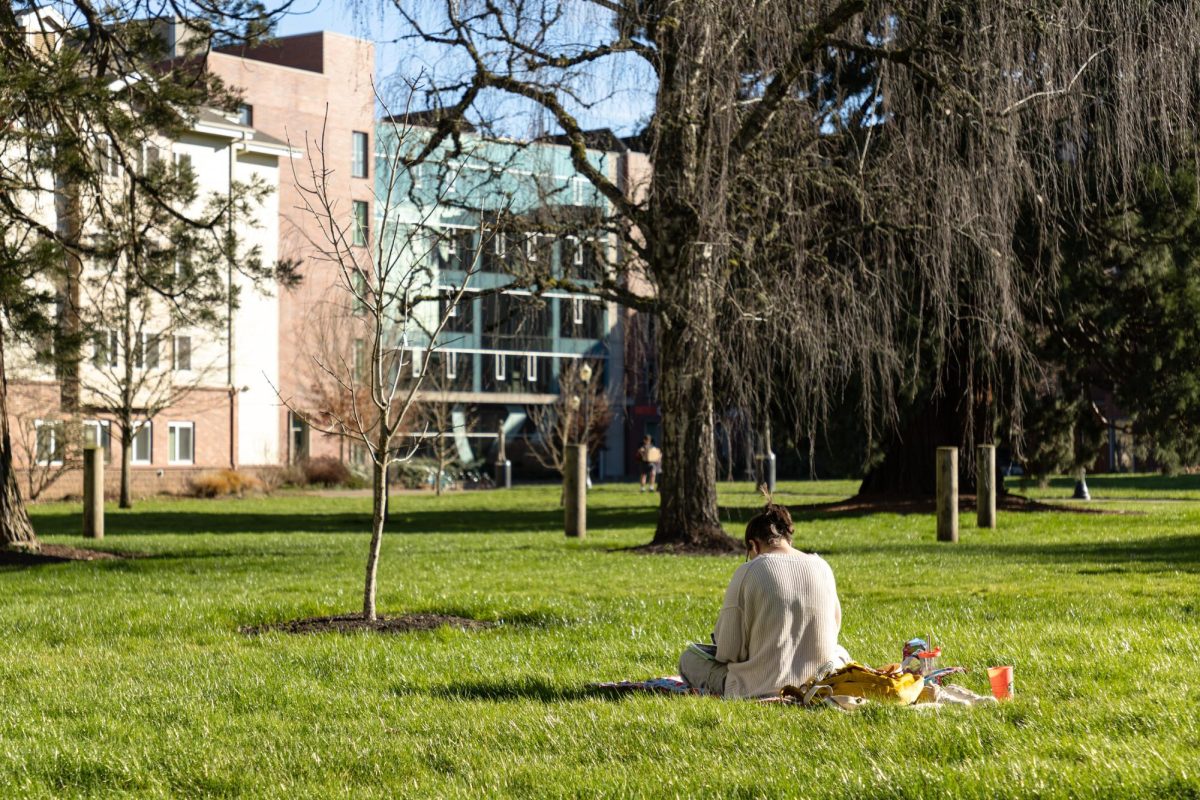Thanks to decades of detailed planning, Oregon State University’s campus is particularly grassy, which you might have noticed but not fully appreciated.
OSU’s land use plans stretch back to 1986, and have since been improved upon through various other plans, in particular the 2004-2015 Campus Master Plan. These plans have governed details about construction projects happening this year, such as the developing Patricia Valian Reser Center for the Creative Arts and the renovation of a stretch of Washington Way between Southwest 26th Street and Southwest 15th Street, but also mandate the green space on OSU’s campus.
According to Jason Yaich, planning division manager for the City of Corvallis, several innovations were made by the Campus Master Plan, including a rule that 50% of the land would be devoted to open space for quads, gardens, trees and more. In addition, the plan ensured quick completion of transportation infrastructure and expedited the development review process.
The 2004 plan was proposed by OSU and accepted after being reviewed by the Corvallis Planning Commission, City Council and other members of the community. After being adopted, as long as OSU held to the standards, their projects could proceed straight to a building permit, Yaich said.
“I believe OSU has benefited greatly from this agreement,” said Todd Cross, OSU landscape manager. “Recruitment and retention hinges tremendously on the outdoor environment, many people make their decision to come here based on how the environment makes them feel. Our sections of open space provide the respite needed for people to recharge themselves before heading back into a lab or a computer screen. The open spaces also provide areas to have events. These events help build a campus community and also help connect us with the greater community of Corvallis.”
Liam Murphy, an OSU civil engineering student from New Mexico, said they were drawn to the details of the university’s infrastructure and open green space when they were first touring the OSU College of Engineering.
“I did really enjoy the beauty and vibe of OSU when I first visited and the sheer number of trees definitely played into that a little bit,” Murphy said.
Murphy said they were drawn to one tree in particular near The Valley Library’s water fountain that seemed to be overgrown with ivy or ferns which Murphy liked.
“We don’t get a lot of ferns in New Mexico,” Murphy said. “When I originally saw it freshman year, I’m pretty sure it was early morning, so all the leaves and ferns were illuminated and glowing by the sun. It stood out a lot then.”
Land use plans also often regulate the construction of buildings, sometimes setting important height restrictions which may pose problems with dorm capacity, which OSU’s high enrollment has challenged. There’s a question about how to expand: outwards or upwards?
Yaich says the OSU zone has some of the tallest height allowances in Corvallis, partly owing to structures like Reser Stadium, but that Corvallis’ policy encourages balancing the two, but with a more “compact urban form,” reducing transportation distances.











































































































